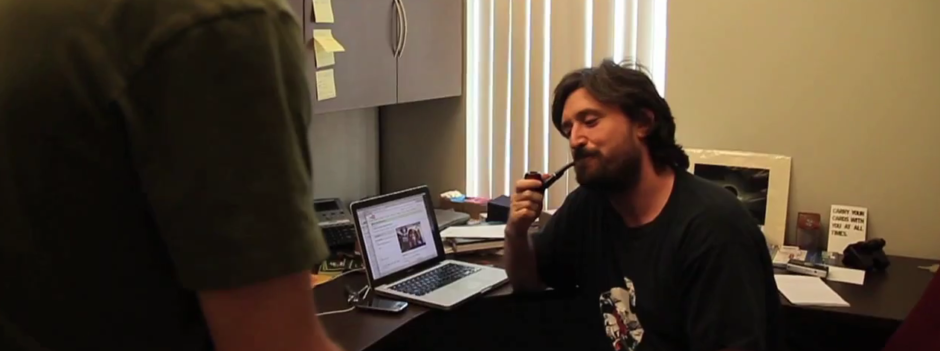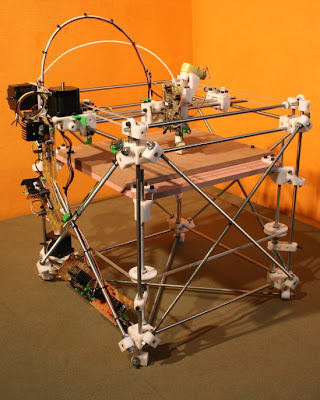RepRap will make plastic, ceramic, or metal parts, and is itself made from plastic parts, so it will be able to make copies of itself. It is a three-axis robot that moves several material extruders. These extruders produce fine filaments of their working material with a paste-like consistency. If RepRap were making a plastic cone, it would use its plastic extruder to lay down a quickly-hardening filament of molten plastic, drawing a filled-in disc. It would then raise the plastic extrusion head and draw the next layer (a smaller filled disc) on top of the first, repeating the process until it completed the cone. To make an inverted cone it would also lay down a support material under the overhanging parts. The support would be removed when the cone was complete. Conductors can be intermixed with the plastic to form electronic circuits – in 3D even!
This process is called fused deposition modeling; machines that do this are called 3D printers, rapid prototypers, or fabbers. They are very useful. Unfortunately they are also very expensive – €20,000 or more – and existing models don’t self-replicate. The RepRap build cost will be less than €400 for the bought-in materials, all of which have been selected to be as widely available everywhere in the world as possible. Also, the RepRap software will work on all computer platforms for free. Complete open-source instructions and plans are published on this website for zero cost and available to everyone so, if you want to make one yourself, you can. (reprap.com)
About
Jeff Watson is an artist, designer, and Assistant Professor of Interactive Media and Games at the University of Southern California School of Cinematic Arts.
-

